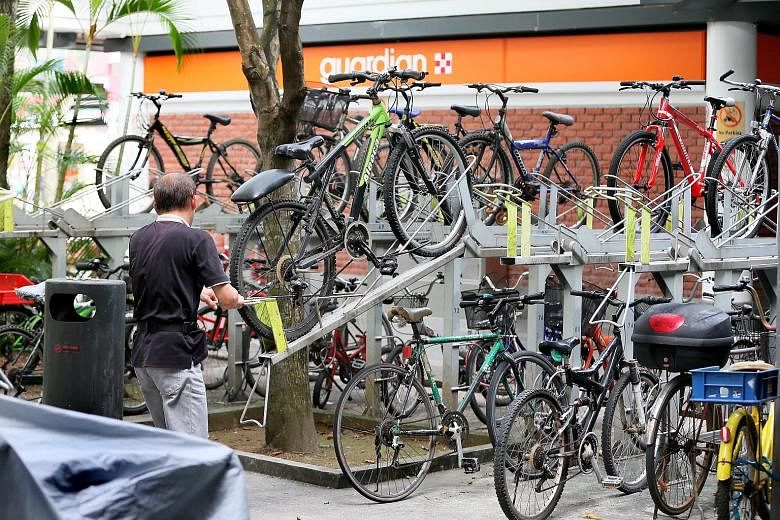Most of us had our first taste of freedom on a bike, when at the age of four or five, we explored our neighbourhoods atop a rickety bicycle with training wheels.
Cycling is one of the most exhilarating experiences a child can have but many stop cycling as they get older.
That was certainly the case for me. I picked up cycling again only years later when I was 18.
But coming back to cycling can be intimidating. I remember having many questions such as:
Where can I ride? What kind of bicycle and safety gear should I get? What are the rules I have to follow?
Here are some tips you might find useful.

What kind of cyclist are you?
The first question to ask: What do you want to use your bike for?
Are you looking for a speedy road bike or mountain bike to go on the road or trails?
Or do you want a reliable folding bike which you can use for commuting and running errands, and which you can take on the train?
Getting a bike that suits your needs and is the right size for you should be the first consideration.
Visit a bike shop whose employees will be able to help you get the ride you need.
Safety gear
Wearing and having proper safety gear is important. Here is what you need.
1. A HELMET
Singapore has no mandatory helmet laws for cycling.
If you are riding on the road, however, helmets are absolutely essential. They protect your head.
I have had three nasty crashes on the road and, all three times, my helmet took the impact and cracked.
If I had not been wearing one, I might have died or suffered a serious injury.
2. LIGHTS AND VISIBLE CLOTHING
The new Active Mobility Bill passed by Parliament last month will require cyclists to have both front and rear lights when riding at night.
But go one step further and wear bright coloured clothing as well.
Being visible is in your interest.
Both pedestrians and drivers will be able to see you coming and have time to react.
Riding tips
1. KNOW AND OBEY TRAFFIC RULES
At the moment, cyclists do not require a driving licence to ride on the roads but riders should at least know the basic traffic rules.
Mr Steven Lim, president of the Safe Cycling Task Force, says riders need to know three important ones:
• Stop at red lights
• Keep left
• Be aware of traffic around you
2. RIDING AT LOW SPEED
One key skill to master is how to handle your bike at low speeds - it is an important skill that beginners would find useful, whether they are riding in traffic, or navigating crowds on the pavement.
Mr Lim says beginner cyclists often panic when they see crowds.
Knowing that you can handle your bike at low speeds will give you confidence.
You can practise this by setting up a simple circuit in the shape of a square in a carpark and learning how to ride around the tight corners.
Some cycling groups, such as Love Cycling SG, also conduct cycling clinics every so often, and experienced riders there would be able to show you the ropes.
3. RIDING WITH ONE HAND
Once you have mastered that, learning to ride with one hand is next.
This will allow you to put your hand out to signal to drivers or pedestrians, whether you intend to turn left or right, or when you are stopping.
Where can you ride?
People can ride bicycles just about anywhere - on the roads, footpaths, cycling paths and shared paths.
Plan your route
If you are thinking about using your bicycle as a mode of commute or to get somewhere, planning your route is one of the most important things to do.
The National Parks Board has a map of the Park Connector Network on its website which is a good starting point.
It is often better to pick a longer route that has less traffic or one that has dedicated cycling paths.
It might take you a little longer to get to where you want to go but you will be all that much safer.
• For more details, read the online version of this guide at http://str.sg/4niV.


